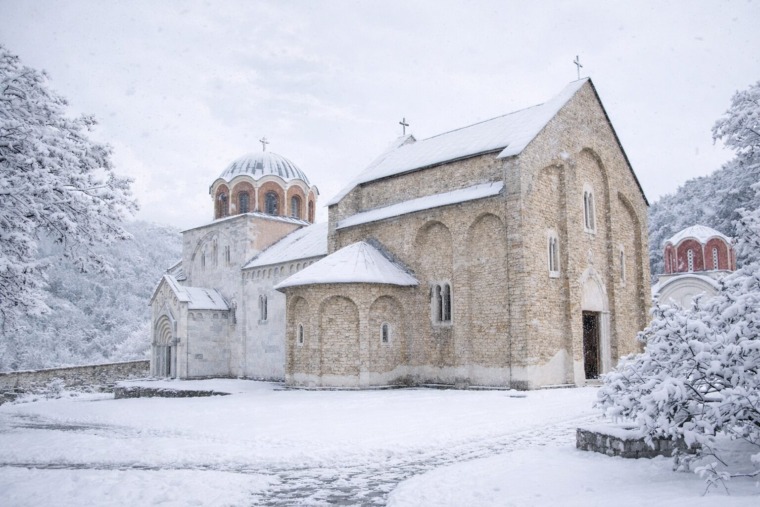

Embroidery has been a cornerstone of Serbian cultural expression for centuries, with the art of đerđef embroidery standing out as one of the most cherished and intricate forms. The word “đerđef” refers to the wooden embroidery hoop used to stretch fabric taut, enabling the artisan to create detailed and delicate patterns.
This traditional craft, passed down through generations, reflects Serbia’s history, creativity, and connection to nature. Though its practice has waned in modern times, đerđef embroidery remains a powerful symbol of Serbian heritage.
Origins of Đerđef Embroidery
The art of embroidery in Serbia dates back to the medieval period, flourishing in the homes of aristocrats and peasant households alike. While embroidery was a universal practice, the use of the đerđef hoop elevated the precision and complexity of the designs.


It became a common feature in households, as young girls were taught this skill from an early age. Beyond its practicality, embroidery was an artistic outlet, a way to document family stories, and a medium for expressing creativity.
Techniques and Tools
The primary tool for đerđef embroidery is the hoop, traditionally made from smooth wood or metal. The fabric—often linen, cotton, or silk—was stretched tightly over the hoop, allowing for intricate needlework. Artisans used threads dyed with natural pigments, resulting in vibrant yet earthy colors that reflected Serbia’s lush landscapes.
Key techniques included:
- Cross-stitching: For geometric patterns and borders.
- Flat stitching: To create smooth, seamless designs, often used for floral or figurative motifs.
- Cutwork: Intricate designs involving the removal of sections of fabric, leaving lace-like effects.

Patterns ranged from floral arrangements and religious symbols to geometric shapes inspired by Balkan folklore.
Cultural Significance
Đerđef embroidery was more than decorative—it was deeply symbolic. Embroidered items often marked significant life events:
- Dowries: Young brides would showcase their embroidery skills through linens, tablecloths, and garments included in their dowry, symbolizing their readiness for married life.
- Religious ceremonies: Items such as altar cloths and vestments were richly embroidered with spiritual motifs.
- Festivals and celebrations: Traditional clothing adorned with detailed embroidery was worn during holidays and special occasions, reflecting the wearer’s region and status.
Each pattern told a story, with motifs carrying meanings such as prosperity, fertility, or protection against evil.
Challenges in Modern Times
The decline of đerđef embroidery began in the mid-20th century, as industrialization brought factory-made textiles and clothing. Younger generations, lured by urbanization and modern lifestyles, found less time to learn and practice this labor-intensive craft.

Today, only a handful of artisans continue to practice đerđef embroidery, often working in rural areas or as part of cultural preservation projects. Mass-produced goods have replaced many traditional embroidered items, making the handmade pieces rare and valuable.
Preservation and Revival Efforts
In recent years, there has been a resurgence of interest in Serbia’s traditional arts, including đerđef embroidery. Several initiatives aim to preserve and promote this heritage:
- Workshops and Training Programs: Local communities and cultural organizations host workshops to teach embroidery skills to new generations.
- Artisan Collectives: Groups of women artisans collaborate to produce and sell embroidered goods, blending traditional techniques with modern designs.
- Ethno-Tourism: Visitors to Serbia are introduced to đerđef embroidery through cultural tours, museum exhibitions, and craft fairs.
- Digital Platforms: Social media and e-commerce have given artisans a global stage, allowing them to showcase and sell their work to international audiences.

Fashion designers have also begun incorporating traditional Serbian embroidery into contemporary clothing and accessories, bridging the gap between past and present.
Why Đerđef Embroidery Matters
In a fast-paced, digital world, đerđef embroidery represents a connection to Serbia’s roots—a reminder of the beauty of patience, craftsmanship, and cultural pride. Every stitch is a testament to the artisan’s dedication and a piece of history woven into fabric.
Preserving đerđef embroidery is not just about saving a craft; it’s about keeping alive the stories, values, and traditions of a people. By supporting local artisans and celebrating this timeless art, we ensure that future generations can experience and appreciate the profound beauty of Serbia’s cultural heritage.









